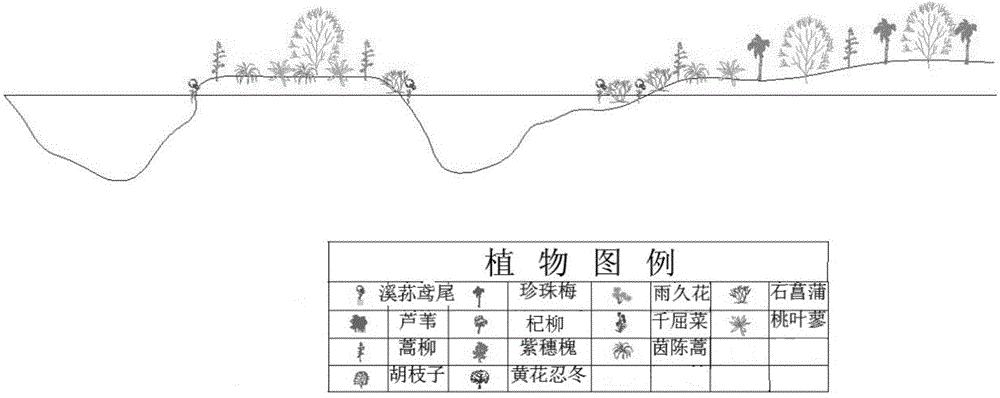Construction method suitable for ecologically restoring vegetation of riparian zone of sand excavation riverway in north
A technology for ecological restoration and construction methods, applied in chemical instruments and methods, sustainable biological treatment, biological water/sewage treatment, etc., to achieve the effect of quick effect, small investment and easy management
- Summary
- Abstract
- Description
- Claims
- Application Information
AI Technical Summary
Problems solved by technology
Method used
Image
Examples
Embodiment 1
[0027] For the test site, the inflow channel of the Hun River in Fushun City, Liaoning Province was selected, and the specific restoration methods are as follows:
[0028] Vegetation in the riparian zone, survey of background value of water and soil: The riparian zone of this river section has been seriously damaged by sand mining, and the main threat to the water body is agricultural non-point source pollution. The nitrogen and phosphorus content in the river water quality and soil both exceed the standard.
[0029] Selection of suitable plants in the riparian zone; mainly local species, and control the use of exotic species; ecological adaptability: cold resistance, barren resistance, drought tolerance, developed root system, and strong water and soil conservation capabilities are several requirements that all plants should meet. Landscape diversity: When choosing plants, attention should be paid to the combination of diversity. Aesthetic features: The aesthetics of stems, l...
Embodiment 2
[0033] In the test site, the potential ecological hazard of heavy metals is relatively large, and the specific restoration methods are as follows:
[0034] Vegetation in the riparian zone, investigation of water and soil background value: the riparian zone of this river section is affected by mining, and heavy metals are deposited in the soil; Cd, as a highly toxic pollution element, has an average content of 0.24 mg / kg, which is twice the background value of soil in Liaoning Province . After the sand mining is destroyed, heavy metals such as Cd in the soil will enter the water body with the sand mining, and the potential ecological harm of heavy metals is relatively large.
[0035] Screening of suitable plants in the riparian zone: while taking into account the screening method in Example 1, the tolerance of plants to heavy metals and their ability to absorb heavy metals should also be considered.
[0036] The collocation planting species for nearshore shallow water area and...
PUM
 Login to View More
Login to View More Abstract
Description
Claims
Application Information
 Login to View More
Login to View More - R&D
- Intellectual Property
- Life Sciences
- Materials
- Tech Scout
- Unparalleled Data Quality
- Higher Quality Content
- 60% Fewer Hallucinations
Browse by: Latest US Patents, China's latest patents, Technical Efficacy Thesaurus, Application Domain, Technology Topic, Popular Technical Reports.
© 2025 PatSnap. All rights reserved.Legal|Privacy policy|Modern Slavery Act Transparency Statement|Sitemap|About US| Contact US: help@patsnap.com

